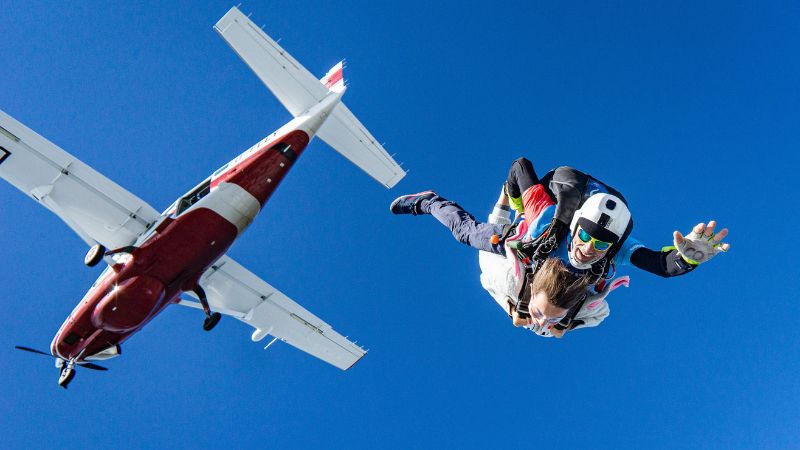Extreme sports are known for their thrill and danger, attracting adrenaline junkies and adventure seekers from all over the world. These sports involve pushing the limits of physical and mental capabilities and are not for the faint-hearted. However, what motivates athletes to participate in these high-risk activities? In this article, we will explore the psychology of extreme sports, the mindset of athletes who participate in them, and the benefits and risks associated with these activities.
What Are Extreme Sports?

Extreme sports are activities that involve a high level of risk and require physical and mental exertion beyond what is considered normal for most people. Examples of extreme sports include skydiving, base jumping, big wave surfing, rock climbing, and snowboarding. These activities often take place in remote or hard-to-reach locations and require specialized equipment and training.

The Psychology of Extreme Sports:
The psychology of extreme sports is a complex subject, and there is no one-size-fits-all explanation for why people engage in these activities. However, researchers have identified several factors that may contribute to the attraction of extreme sports.
Thrill-seeking
One of the main reasons people participate in extreme sports is the thrill they provide. Adrenaline junkies are attracted to the rush of adrenaline that comes with these activities, which can create a sense of euphoria and excitement.
Sense of accomplishment
Extreme sports often require a high level of skill and mastery, and participants can feel a sense of accomplishment when they successfully complete a difficult maneuver or overcome a challenging obstacle. This sense of accomplishment can be a powerful motivator for athletes.
Increased confidence
Participating in extreme sports can also increase an individual’s self-confidence and self-esteem. When athletes push their limits and overcome their fears, they may feel more capable of achieving other goals in their lives.
Sense of community
Many extreme sports have a tight-knit community of enthusiasts who share a common passion for the activity. This sense of community can provide a sense of belonging and support for athletes, which can be particularly important when participating in risky activities.

The Benefits of Extreme Sports:
While extreme sports are often associated with danger and risk, they can also have several benefits for participants.
Improved mental toughness
Participating in extreme sports requires a high level of mental toughness and resilience. Athletes must learn to manage their fear and stay focused under pressure, which can translate into other areas of their lives.
Physical fitness
Many extreme sports require a high level of physical fitness, and athletes must be in good shape to participate. Regular training and conditioning can improve overall health and well-being.
Stress relief
Participating in extreme sports can be a great way to relieve stress and unwind. The rush of adrenaline can provide a natural high that can improve mood and reduce anxiety.

The Risks of Extreme Sports:
While the benefits of extreme sports are clear, it is important to acknowledge the risks and dangers associated with these activities.
Injury
Extreme sports often involve a high risk of injury, and athletes must be prepared for the possibility of accidents and mishaps. Broken bones, concussions, and other injuries are not uncommon in extreme sports.
Death
In some extreme sports, the risk of death is a real possibility. Skydiving, base jumping, and big-wave surfing all carry a high risk of fatality, and athletes must be aware of the dangers and take appropriate precautions.
Legal issues
In some cases, extreme sports may be illegal or may require permits or licenses to participate. Athletes must be aware of the legal requirements for their activity and ensure they are in compliance with local laws and regulations.

Conclusion:
Extreme sports are not for everyone, but for those who participate, they can be a powerful source of thrill, challenge, and personal growth. While extreme sports are not without risks, the benefits they provide are many. From improved mental toughness and physical fitness to stress relief and a sense of community, extreme sports can have a positive impact on athletes’ lives.
If you are interested in participating in extreme sports, it is important to do your research and seek out professional training and guidance. Proper equipment and safety measures are also essential to minimize the risks associated with these activities. Remember to always put safety first and never take unnecessary risks.
In conclusion, the psychology of extreme sports is a fascinating subject that continues to intrigue researchers and athletes alike. Whether you are a seasoned extreme sports enthusiast or simply curious about the motivations behind these activities, there is no denying the thrill and excitement they provide. By understanding the risks and benefits of extreme sports, you can make an informed decision about whether they are right for you.
Frequently Asked Questions
What is extreme sports psychology?
Extreme sports psychology is the study of the mental and emotional factors that drive athletes to engage in high-risk activities, and how they cope with the physical and psychological challenges that come with them.
What are the benefits of extreme sports?
Extreme sports can offer a range of benefits, including increased self-esteem, enhanced cognitive function, improved physical fitness, and an overall sense of accomplishment.
What motivates athletes to participate in extreme sports?
Athletes who participate in extreme sports are often driven by a desire to push their limits and test their skills, as well as a need for excitement and a sense of adventure.
What are the risks of extreme sports?
Extreme sports carry a high risk of injury or death, and athletes who participate in them must take extra precautions to ensure their safety.
How do extreme sports athletes manage fear?
Extreme sports athletes use a range of psychological techniques to manage fear, including visualization, positive self-talk, and breathing exercises.
Can extreme sports help with anxiety?
Some studies suggest that participating in extreme sports can help reduce anxiety and improve mental health, as the rush of adrenaline can act as a natural mood booster.
What role does adrenaline play in extreme sports?
Adrenaline is a hormone that is released in response to stress, and it plays a key role in the experience of extreme sports by increasing heart rate, blood pressure, and energy levels.
How do extreme sports impact the brain?
Extreme sports can have a positive impact on the brain, by promoting neuroplasticity and improving cognitive function, memory, and attention.
How do extreme sports athletes prepare for competitions?
Extreme sports athletes must prepare both physically and mentally for competitions, by engaging in rigorous training programs and practicing mental strategies such as visualization and goal-setting.
What are some of the most popular extreme sports?
Popular extreme sports include surfing, rock climbing, BASE jumping, skydiving, snowboarding, and mountain biking.
How can extreme sports be made safer?
Extreme sports can be made safer through the use of proper safety equipment, training programs, and regulations that limit the risks associated with these activities.
What is the future of extreme sports?
The future of extreme sports is likely to involve the development of new technologies and equipment that enable athletes to push the boundaries of what is possible, while also minimizing the risks associated with these activities.
